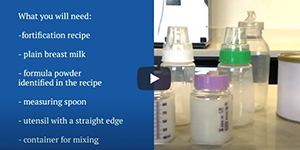Preparing for Discharge from the NICU
Preparing for Discharge from the NICU
When Your Baby is Ready to Leave the NICU
On the day your baby is admitted to the NICU, we like to begin thinking about the day you will take your baby home. We want you to start talking, singing, and reading to your baby as soon as your baby is stable. We would like you to join in the baby’s care by changing the baby’s diaper, taking the baby’s temperature, and talking with the nurse about your baby’s care. We want you to have a chance to feed your baby many times before you take your baby home. We have daily classes so you can learn about baby care. We will teach you special things you need to know about your baby before you take him or her home. Your baby may need to go home with medicines, and we will teach you how to give those. Your baby may need special equipment, and we will teach you about that before you take your baby home. If there is anything special you want to learn (like infant CPR), let us know and we will teach it to you.

Video shows how to fortify breastmilk with formula powder according to the recipe provided at discharge: materials needed, steps of the process, and reminders about storage.
The staff of the NICU looks at many factors to determine when a baby can go home. All signs are positive when your baby is able to:
- Take all feedings by mouth
- Maintain his/her temperature in an open bed
- No longer requires oxygen or monitors
By visiting your baby regularly, you can work with our staff in planning for your baby to go home.
As soon as you know who your baby’s doctor will be after he or she goes home, tell us. If you don't have a primary care physician for your baby, our staff can help you find one. We will talk with your baby’s doctor so he or she will know your baby was in the NICU and what happened while your baby was with us.
Transferring to Another Medical Unit
Your baby may be well enough to leave the NICU, but might not be ready to go home with you. Although your baby may not need intensive care he or she may still need special care. Your baby may need antibiotics, time to gain weight and grow, or more monitoring for apnea and bradycardia. In these cases, he or she may be transferred to the newborn nursery/birthing center, to one of the pediatric floors at the Golisano Children’s Hospital or even to another hospital.
Although we would like to have each of our babies discharged home, this is not always possible. The NICU at the Golisano Children’s Hospital is the only Neonatal Intensive Care unit for a 14-county region. Transfer to a special care unit at a community hospital or to one of the pediatric floors allows a family the opportunity to transition to home.
Many families are nervous about the transfer of their baby to a regional hospital This is a common feeling related to meeting a new medical team, becoming familiar with a new hospital, and leaving behind a familiar nursery with familiar faces. Transferring your baby to a hospital closer to your home can be a positive experience. The atmosphere at most of the regional nurseries is less hectic than that of the NICU. This is a wonderful opportunity to get to know, cuddle, and enjoy your baby prior to his or her discharge to home.
Car Seats
As of November 1st, 2019 all children in New York State must remain rear-facing until their 2nd Birthday, or until they reach the maximum height and weight limits for their car seat. All children must be restrained in an appropriate child restraint system while riding in a motor vehicle, until they reach their 8th Birthday, per New York State law.
The 2019 American Academy of Pediatrics recommends that children remain rear-facing as long as possible or until they reach the height and weight limits of their car seat. Children should then transition to and remain in a forward-facing 5 point harness as long as possible, or until they reach the height and weight limits of the car seat. Children should then transition to a booster seat, and remain in that until they reach about 4 feet 9 inches, usually between 8-12 years of age. All children should ride in the back seat of vehicles until their 13th Birthday.